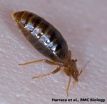(Press-News.org) Athens, GA—A new University of Georgia study published in the journal Nature has identified a critical enzyme that keeps traffic flowing in the right direction in the nervous system, and the finding could eventually lead to new treatments for conditions such as Alzheimer's and Parkinson's disease.
"There was no medical or any other applied science drive for this project; it was purely curiosity about how transport inside cells works," said study co-author Jacek Gaertig, professor in the cellular biology department in the UGA Franklin College of Arts and Sciences. "But it looks like we have identified an important enzyme that acts in the nervous system."
He explained that cells contain a network of tubes known as microtubules that are made of protein and serve as tracks for the shuttling of materials from one part of the cell to another. The traffic signs on this microtubule network are chemical additions such as acetylation marks. Microtubules in parts of neurons in the brain that send signals, for example, are loaded with acetylation marks. Microtubules in parts of neurons that receive signals, on the other hand, have few.
Acetylation marks were discovered in 1983, and researchers recently determined their role in regulating the binding of the motor proteins that shuttle materials along microtubules. What has been unclear for more than 25 years, however, was the cellular process by which these acetylation marks are formed. In other words, which enzyme decides where the traffic signs go?
Through a series of studies using the microscopic protozoan Tetrahymena, the nematode C. elegans, zebrafish and human cancer cells, Gaertig and his colleagues revealed that an a protein known as MEC-17 is the traffic engineer in charge of microtubule acetylation.
MEC-17 acts as an enzyme to catalyze the acetylation reaction on microtubules, and is involved in the sensation of touch in the nematode. Its depletion in zebrafish, which are commonly used as a model organism to study basic processes, results in neuromuscular defects. Importantly, several research groups have previously reported that the levels of acetylation marks on microtubules are altered in human neurodegenerative diseases such as Huntington's, Parkinson's and Alzheimer's.
Gaertig said that with the enzyme identified and its mechanism of action known, it is now possible for drug manufacturers to search for compounds that block or enhance its activity.
Graduate student Shilpa Akella and postdoctoral associate Dorota Wloga in Gaertig's lab studied the enzyme in the protozoan and in vitro, while Jihyun Kim and Natalia Starostina in the lab of Edward Kipreos, professor of cellular biology, showed how it worked in the nematode and found that the enzyme is active in human cancer cells. The lab of associate professor and Georgia Cancer Coalition Distinguished Scholar Scott Dougan deduced its role in zebrafish, and Sally Lyons-Abbott and Naomi Morrissette at the University of California-Irvine biochemically purified microtubules that are marked by MEC-17.
"Working together allowed us to use all kinds of models to establish that this microtubule acetylation process using MEC-17 is an evolutionarily conserved function," Gaertig said. "Without close collaboration, that would not have been possible."
INFORMATION:
The research was supported by the National Science Foundation, American Cancer Society and the National Institutes of Health.
Study identifies critical 'traffic engineer' of the nervous system
2010-09-09
ELSE PRESS RELEASES FROM THIS DATE:
Novel sensing mechanism discovered in dendritic cells to increase immune response to HIV
2010-09-09
New York, NY (September 8, 2010) – Dendritic cells are the grand sentinels of the immune system, standing guard 24/7 to detect foreign invaders such as viruses and bacteria, and bring news of the invasion to other immune cells to marshal an attack. These sentinels, however, nearly always fail to respond adequately to HIV, the virus causing AIDS. Now a team of scientists at NYU Langone Medical Center has discovered a sensor in dendritic cells that recognizes HIV, spurring a more potent immune response by the sentinels to the virus. They report their findings in the September ...
House-sharing with microbes
2010-09-09
Household dust contains up to 1000 different species of microbes, with tens of millions of individual bacterial cells in each gram. And these are just the ones that can be grown in the lab!
Dr Helena Rintala, speaking at the Society for General Microbiology's autumn meeting in Nottingham describes how we share our living and working spaces with millions of microbes, not all of whom are bad news.
Microbes are a part of our normal environment and can be both beneficial and detrimental to our health. "Exposure to microbes in childhood can prevent the development of allergies. ...
Yeast holds clues to Parkinson's disease
2010-09-09
Yeast could be a powerful ally in the discovery of new therapeutic drugs to treat Parkinson's disease says a scientist presenting his work at the Society for General Microbiology's autumn meeting in Nottingham today.
Dr Tiago Fleming Outeiro from the Instituto de Medicina Molecular in Lisbon, Portugal describes how his group is slowly uncovering the molecular basis of Parkinson's disease by studying the associated human protein in yeast cells.
Parkinson's disease is a neurodegenerative disorder without any known cure that affects around 6 million people worldwide. The ...
Why chromosomes never tie their shoelaces
2010-09-09
In the latest issue of the journal Nature, Miguel Godinho Ferreira, Principal Investigator at the Instituto Gulbenkian de Ciência (IGC) in Portugal, lead a team of researchers to shed light on a paradox that has puzzled biologists since the discovery of telomeres, the protective tips of chromosomes: while broken chromosome ends generated by DNA damage (such as radiation or cigarette smoke) are quickly joined together, telomeres are never tied to each other, thus allowing for the correct segregation of the genetic material into all cells in our body. Since telomeres erode ...
Anti-aphrodisiac protects young bedbugs
2010-09-09
Male bedbugs are known to be very unfussy when it comes to mating, mounting any well-fed bug they can see - regardless of age or gender. Researchers writing in the open access journal BMC Biology have discovered how immature bedbug nymphs, who would be harmed by the traumatic insemination technique practiced by the males, release alarm pheromones to deter this unwanted attention.
Vincent Harraca, from Lund University, Sweden, worked with a team of researchers to stage encounters between males and females or nymphs. He said, "The chemical communication, as well as the ...
Scots Pine shows its continental roots
2010-09-09
By studying similarities in the genes of Scots Pine trees, scientists have shown that the iconic pine forests of Highland Scotland still carry the traces of the ancestors that colonised Britain after the end of the last Ice Age, harbouring genetic variation that could help regenerate future populations, according to new results published in the journal Heredity.
The research was carried out by an international team from the Centre for Ecology & Hydrology, the Polish Academy of Sciences, the University of Edinburgh and the Macaulay Land Use Research Institute.
Today's ...
Study adds new clue to how last ice age ended
2010-09-09
As the last ice age was ending, about 13,000 years ago, a final blast of cold hit Europe, and for a thousand years or more, it felt like the ice age had returned. But oddly, despite bitter cold winters in the north, Antarctica was heating up. For the two decades since ice core records revealed that Europe was cooling at the same time Antarctica was warming over this thousand-year period, scientists have looked for an explanation.
A new study in Nature brings them a step closer by establishing that New Zealand was also warming, indicating that the deep freeze up north, ...
Investigating better endpoints for immunotherapy trials
2010-09-09
Cancer immunotherapy calls for revised clinical endpoints that differ from those used for chemotherapy, according to an article published online September 8 in The Journal of the National Cancer Institute.
Unlike chemotherapy, which acts directly on tumors, cancer immunotherapies exert their effects on the immune system, which may delay or change response patterns, perhaps owing to the dynamics of the immune system itself. For example, initial tumor burden may increase due to lymphocytic infiltration, because of T-cell proliferation, which is followed by lymphocyte-induced ...
Researchers identify potential new drug for neurodegenerative disease
2010-09-09
BOSTON, Mass. (September 8, 2010)‹Scientists have discovered a small
molecule that helps human cells get rid of the misfolded, disfigured
proteins implicated in Alzheimer¹s disease and other neurodegenerative
ailments. This potential drug could have applications for other conditions
as well.
Cells create and discard proteins continuously, a process that relies on a
balance between the speed with which new proteins are created and damaged
ones destroyed. Protein destruction occurs through a sophisticated system
that marks proteins for disposal by tagging them with ...
New study suggests changes in diagnosis and treatment of malaria
2010-09-09
LA JOLLA, CA - September 7, 2010 –A team of scientists from The Scripps Research Institute, the Genomics Institute of the Novartis Research Foundation (GNF), and the U. S. Naval Research Detachment in Peru has completed a study that could improve the efficacy of diagnosis and treatment strategies for drug-resistant malaria.
In the new study—published online on September 9, 2010 by the journal Genome Research—the scientists analyzed the genomic features of a population of malaria parasites in Peru, identifying the genetic basis for resistance to a common antibiotic.
Malaria ...





